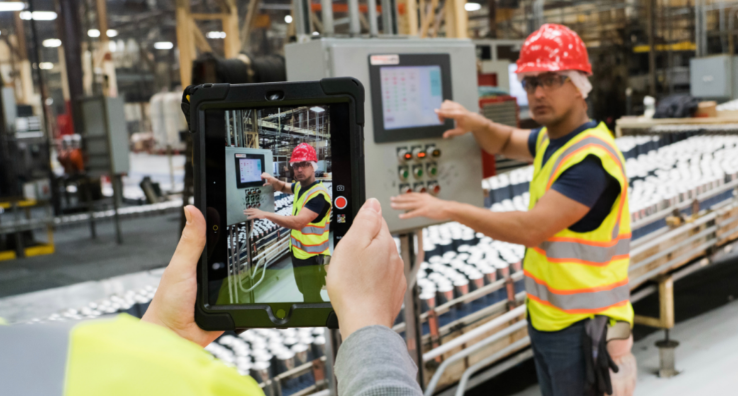Retaining Employees from Day One with Effective Training

Manufacturers around the country are competing for workers during an unprecedented labor shortage. According to the latest research by Deloitte and The Manufacturing Institute, 2.1 million manufacturing jobs are likely to go unfilled through 2030, severely impacting U.S. company revenues and production to the tune of $1 trillion by 2030.
Beyond the usual tactics of increasing wages and benefits, manufacturers need to leverage every tool possible to not only recruit new employees but ensure they’ll stick around for a long while. For many successful manufacturers, employee retention starts on day one with effective training.
Over the last two decades, Intertek Alchemy has worked with companies that understand the value of training as a means to retain and attract employees to their manufacturing facilities. Here’s a brief overview of some of their best practices.
Separate Orientation from Onboarding
Employee onboarding and orientation are often considered to be the same. They’re both introduced to employees, usually on their first few days at work. And they provide the common purpose of introducing the company and job roles. But in reality, they should serve two entirely different functions and be rolled out as separate training processes.
Employee orientation should serve as an introduction to the company, sharing your history, mission, and vision, and reinforce the employee’s decision to join your company. These sessions offer an opportunity for employees to meet their peers and leaders and be introduced to their work environments. By creating a welcoming environment during orientation, you set the tone for the rest of their time with the company.
Also, consider that many of these new employees have never seen a manufacturing facility, especially if they’re young. Manufacturing sites, especially ones that process foods, can be intimidating. So, making the individual comfortable in those surroundings is extremely important.
Remember, you never have a second chance to make a first impression. Craft your orientation to make their first days as welcoming and as pleasant as possible. Encourage your leaders to participate and meet your new employees, help them complete their paperwork, and provide them with an opportunity to evaluate the training.
The onboarding process should introduce employees to their job duties, including tools and resources like PPE and emergency action plans. This is the time to train and equip them with what they need to succeed at their jobs. Help them identify potential hazards, cover Lock Out Tag Out (LOTO) procedures, and show them how to report site-specific hazards.
Employees who are confident about their ability to safely and effectively do their jobs are more likely to stay on the job. The goal here is to get employees up to speed, make them more productive, and work as safely and as quickly as possible for themselves and others in the facility.
Depending on the type of facility that you’re working in, there can be various machines, evacuation routes, and procedures specific to their particular job roles. Introduce the concept of product quality and demonstrate their correct job duties.
Create an Agile Training Program
When talking with our clients about training, it’s clear that no one organization has a single group with the same learning styles and languages. Employees come from all different walks of life, age, language backgrounds, existing skills, and other factors that make them unique. There is no one-size-fits-all program that will connect with everyone, and that’s why many manufacturers are creating agile training programs to connect with multiple audiences.
The same function or topic can be taught in various ways, whether in a classroom, on-the-job training (OJT), eLearning, or over training kiosks. Classroom training, for example, meets the needs of large groups with the benefit of an instructor or supervisor who is qualified to teach that particular subject. And OJT enables you to reach individuals without taking large groups off the work floor. For people who want to learn on their own time, eLearning fits the bill. The pandemic has shown us that the varying delivery methods can be quite powerful and allow people to train at their own pace.
Agile training also makes employees feel more comfortable learning and engaging on their terms, removing the stress from learning and development.
Promote Employee Engagement
Agile training and engagement go hand in hand. Delivering knowledge is never enough. You have to enable and encourage employees to engage. Find a way to make employees feel like they are part of the training – not just the audience. Employees who feel involved with your training will understand and embrace the opportunity to grow with your company – advancing over the years from production workers to supervisors or even plant managers.
Start by incorporating your worksite into your training material. The minute you make things specific to the environment in which people are working, they can see themselves in that process. Training becomes more relevant, for example, if you include actual employees in your training materials. They can then see themselves through their peers as they demonstrate lessons in a customized and personal manner.
Throughout your training programs, always emphasize the “why” in addition to the “how.” And remember that training is a two-way street, which means asking employees how they will utilize what they learn. Discover how they feel about their training experience and the resources they’re using.
You’ll find that some programs are winners, and some are losers. And in the process, you’ll convey their importance and relevance to the program and encourage your employees to contribute in ways that will make you and them more effective.
Making your employees feel as if they’re part of the process will foster valuable relationships, which can help reduce their chances of bailing to another job.





